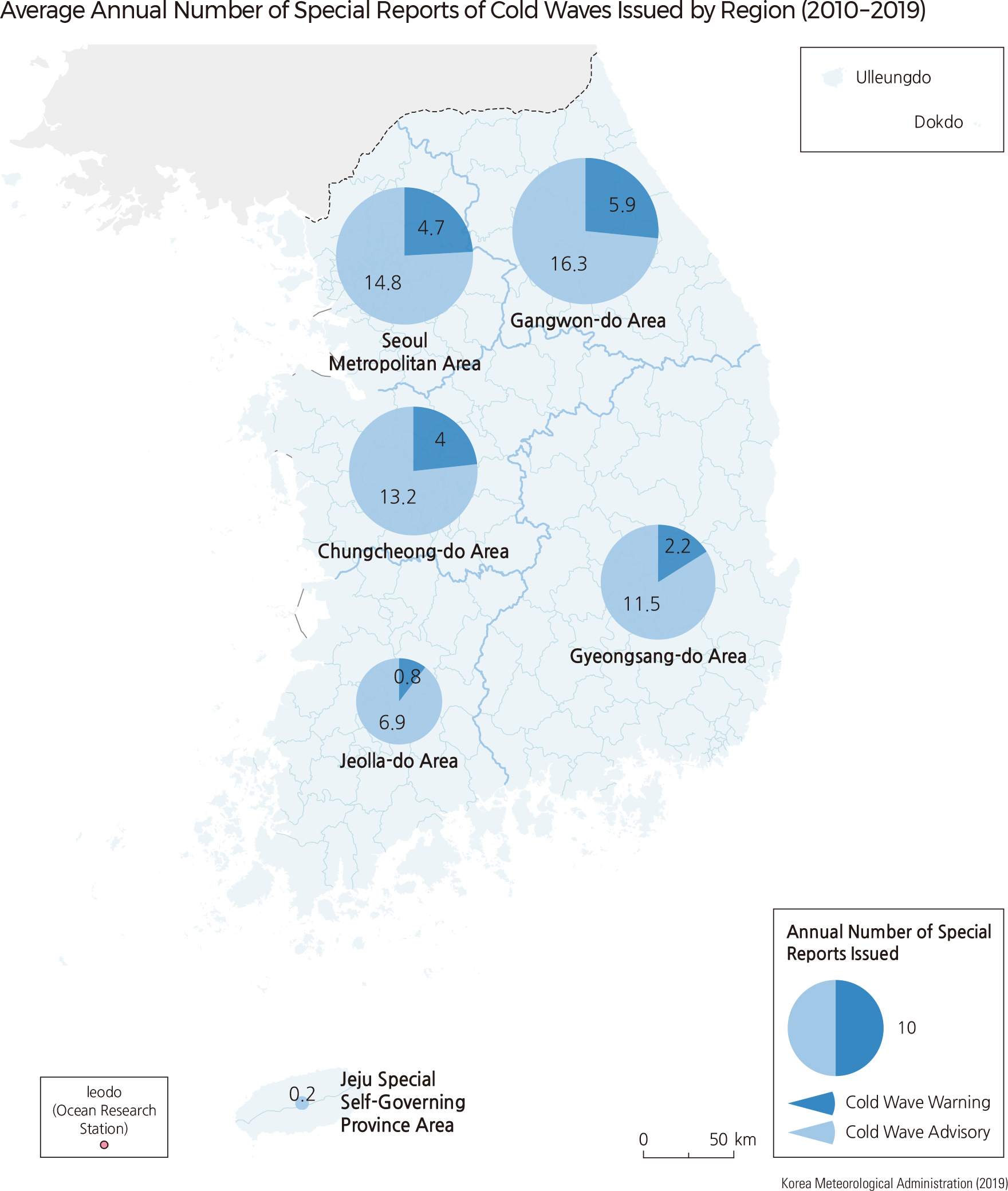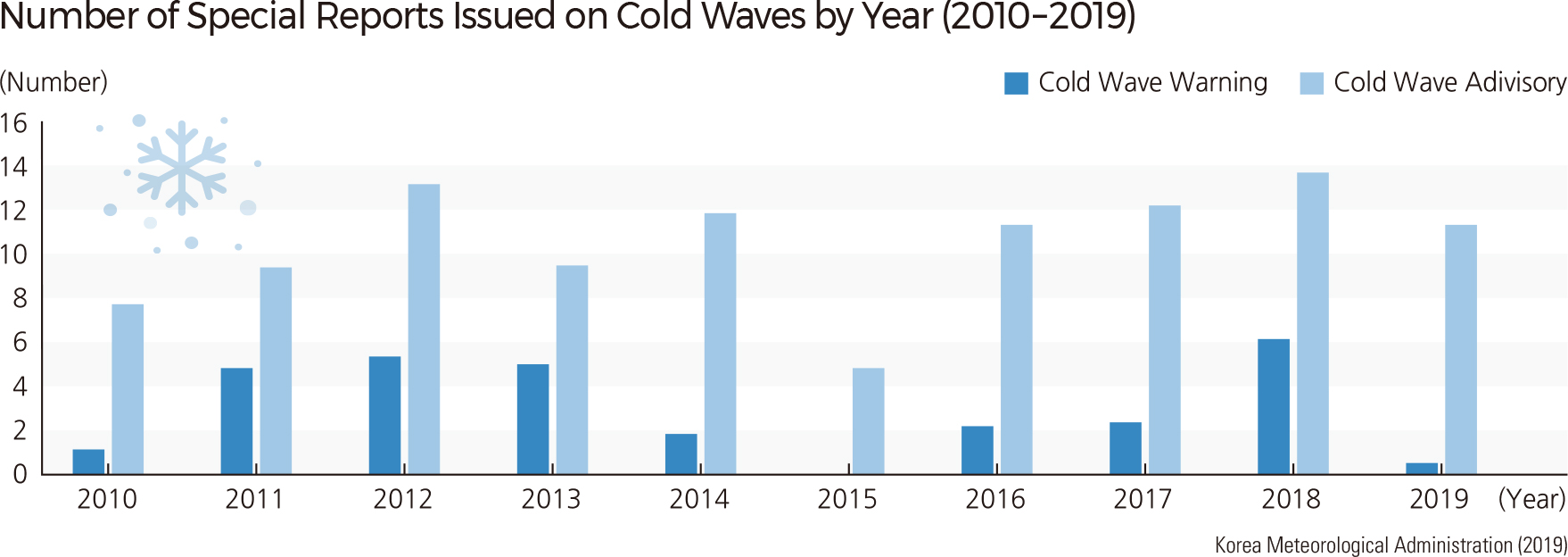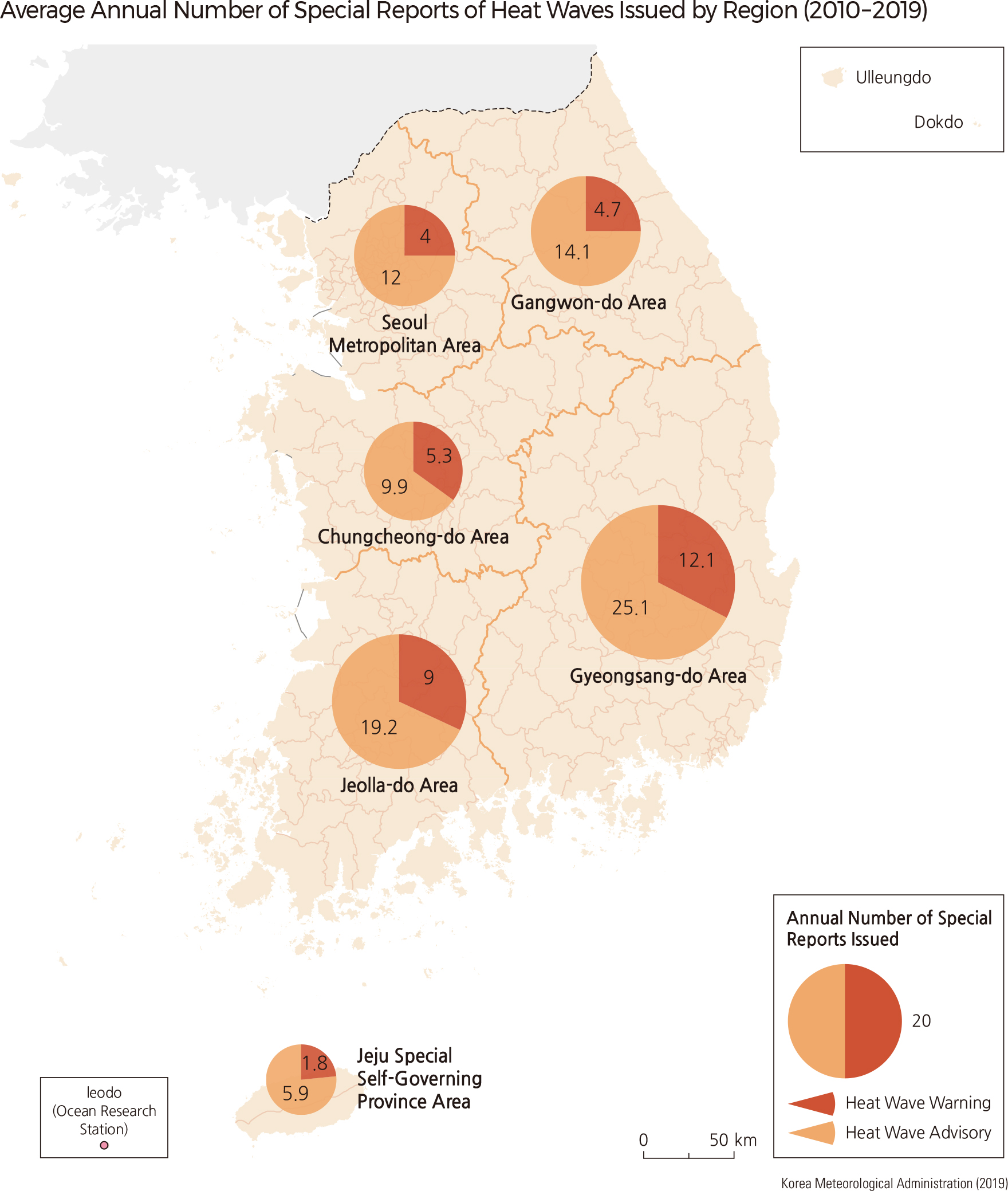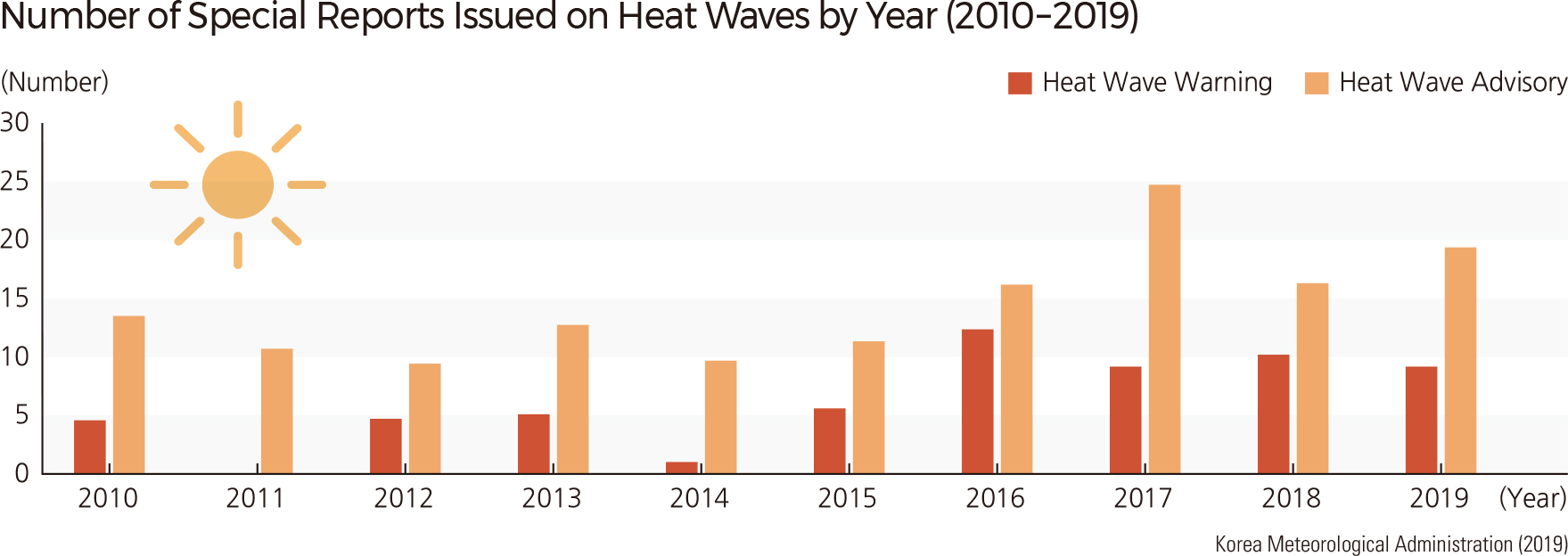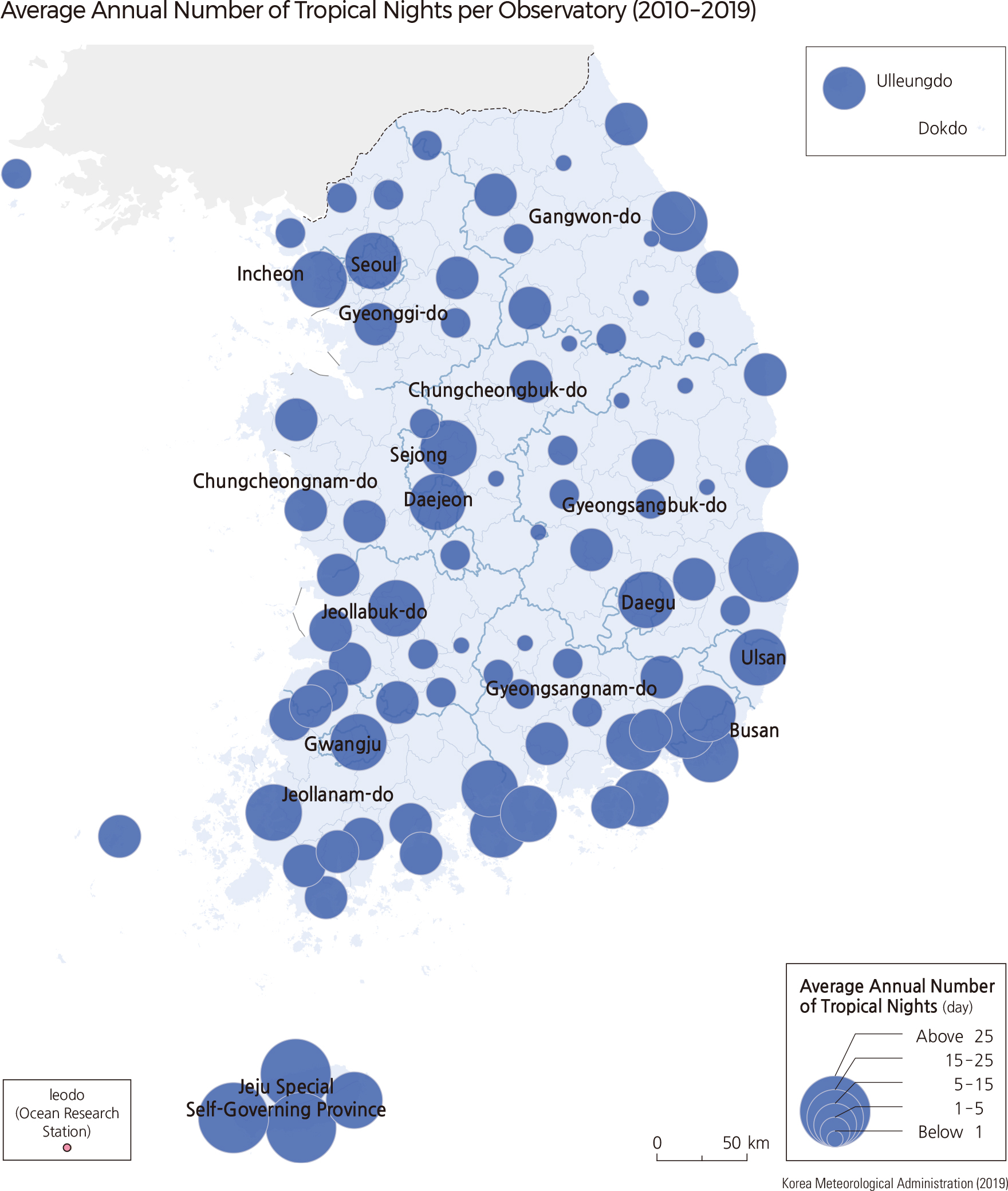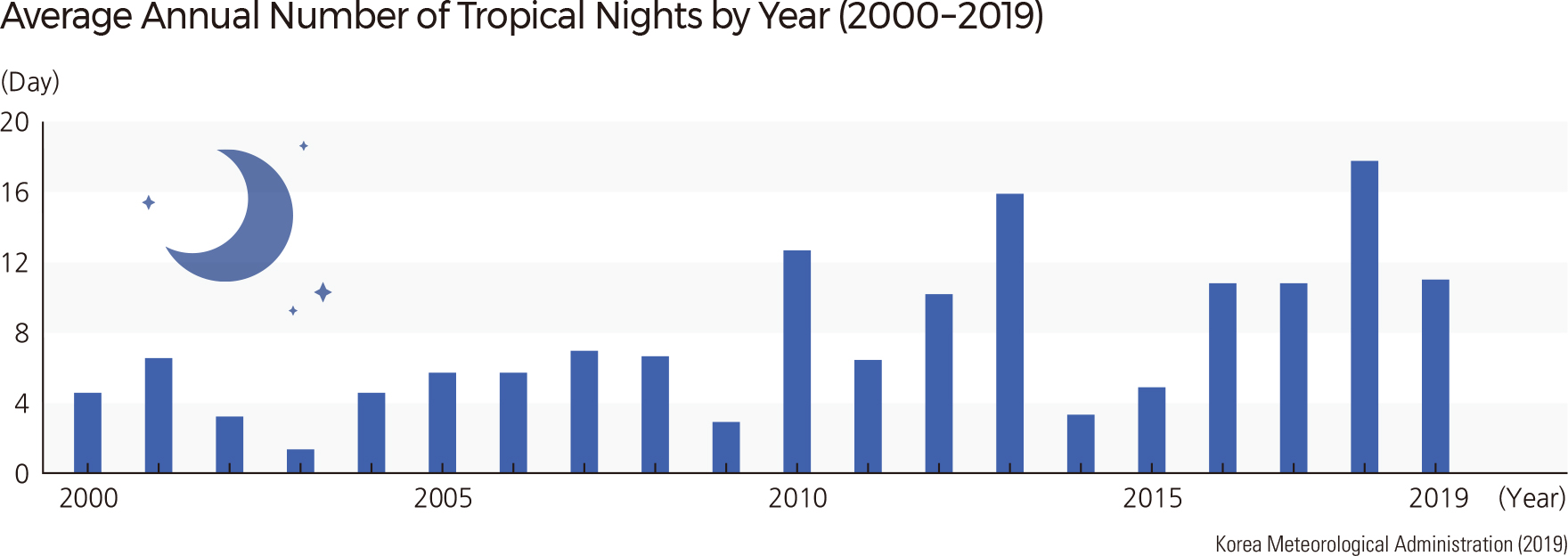English II 2020
Cold waves are distinguished by a sudden drop in temperature over the Korean Peninsula when the cold, dry Siberian anticyclone expands into southern China, and the northerly winds are strengthened. During the Northwest monsoon season, the anticyclone expansion and northerly winds cause cold waves that reach Korea when a high pressure system resides in the west of the Korean Peninsula, and low pressure resides in the east. Cold waves are often detrimental to peoples' lives and health and cause serious damage.
Cold wave special reports are classified as advisories and warnings. A cold wave advisory is issued in three situations. First, it is issued when the minimum temperature in the morning is expected to drop below 3˚C from October to April, decreases more than 10˚C compared to the previous day, and when the temperature drops 3˚C below the annual average. Second, it is issued when the minimum temperature in the morning is expected -12˚C or below for more than 2 days. Third, it is issued when the minimum temperature in the morning is so low that damage is expected. Cold wave warnings are issued in three situations. First, when the minimum temperature in the morning is expected to reach lower than 3˚C from October to April, by 15˚C below than the previous day, and it is expected to be 3˚C lower than the annual average. Second, when the minimum temperature is -15˚C in the morning for 2 days or more.
Third, when the temperature is cold enough to cause critical damage over a wide area.
A heat wave occurs when the temperature and heat index exceed a certain threshold over a period of days. Heat wave special reports are classified as advisories and warnings. A heat wave advisory is issued when the temperature is expected to reach a maximum of 33˚C for more than 2 days. A heat wave warning is issued when the temperature is expected to reach a maximum of 35˚C for more than 2 days.
A tropical night occurs when the temperature does not drop below 25˚C from sunset to sunrise. Tropical nights occur for 13–22 days of the year in southern coastal regions (e.g., Busan), and 9–22 days of the year in inland regions (e.g., Seoul). |
